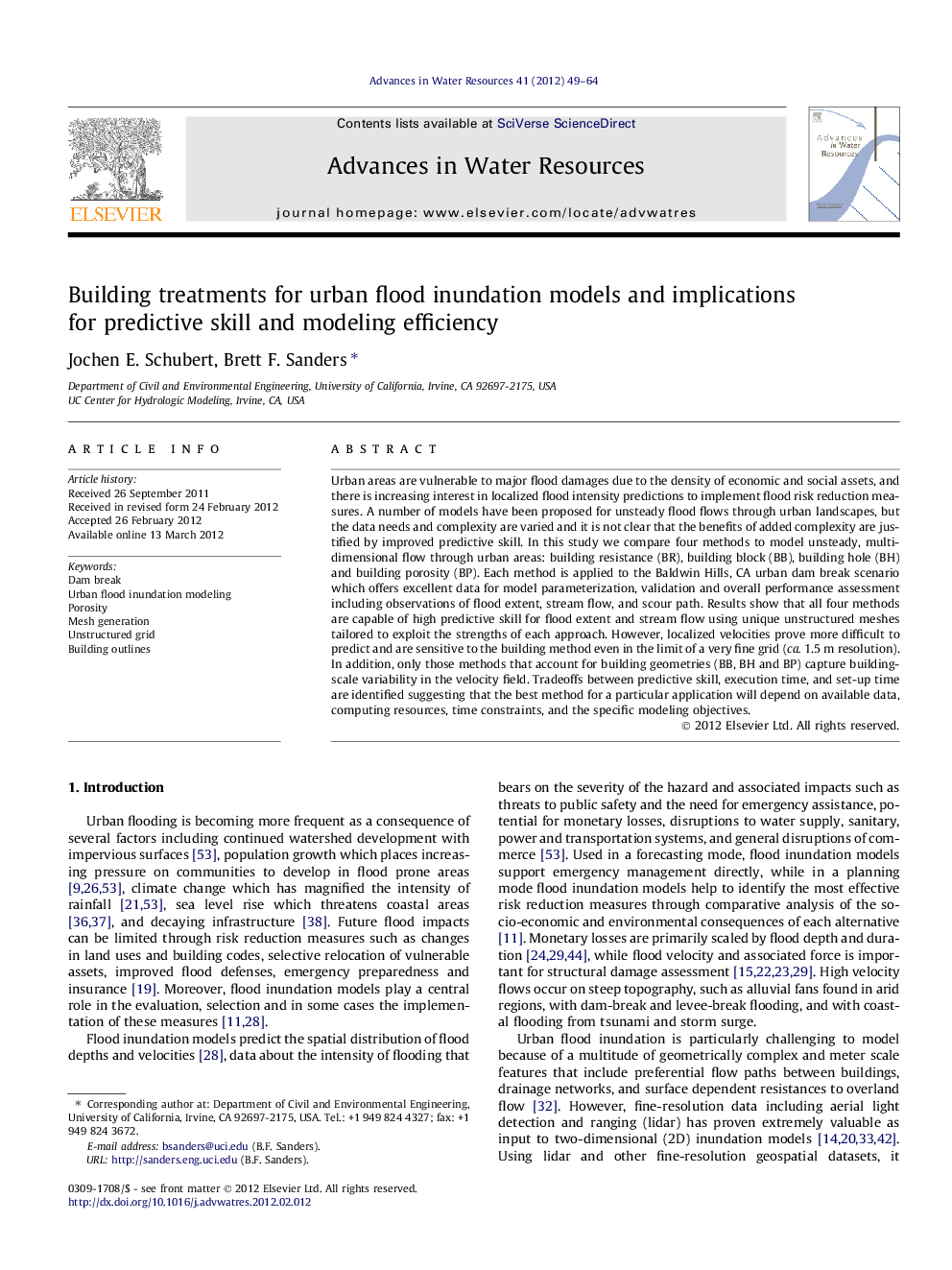| کد مقاله | کد نشریه | سال انتشار | مقاله انگلیسی | نسخه تمام متن |
|---|---|---|---|---|
| 4525898 | 1625667 | 2012 | 16 صفحه PDF | دانلود رایگان |

Urban areas are vulnerable to major flood damages due to the density of economic and social assets, and there is increasing interest in localized flood intensity predictions to implement flood risk reduction measures. A number of models have been proposed for unsteady flood flows through urban landscapes, but the data needs and complexity are varied and it is not clear that the benefits of added complexity are justified by improved predictive skill. In this study we compare four methods to model unsteady, multi-dimensional flow through urban areas: building resistance (BR), building block (BB), building hole (BH) and building porosity (BP). Each method is applied to the Baldwin Hills, CA urban dam break scenario which offers excellent data for model parameterization, validation and overall performance assessment including observations of flood extent, stream flow, and scour path. Results show that all four methods are capable of high predictive skill for flood extent and stream flow using unique unstructured meshes tailored to exploit the strengths of each approach. However, localized velocities prove more difficult to predict and are sensitive to the building method even in the limit of a very fine grid (ca. 1.5 m resolution). In addition, only those methods that account for building geometries (BB, BH and BP) capture building-scale variability in the velocity field. Tradeoffs between predictive skill, execution time, and set-up time are identified suggesting that the best method for a particular application will depend on available data, computing resources, time constraints, and the specific modeling objectives.
► Methods to incorporate buildings in an urban dam-break flood model are compared.
► All methods support accurate flood extent and stream flow prediction.
► Data needs, set-up costs, and execution costs differ across methods.
► The best model depends on modeling objectives and constraints.
► The anisotropic building porosity model is presented and validated.
Journal: Advances in Water Resources - Volume 41, June 2012, Pages 49–64